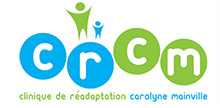Children gradually learn the language while being exposed to their mother tongue. By being exposed to the language through different ways such as games and stories, the more they will develop comprehension and create connections between learning and their own experience.
WHAT IS AN INFERENCE?
Inference is a deduction. In other words, an operation that allows to guess what is not explicitly said or what is implied. It is knowing how to “read between the lines”. For example, if a child hears “You need to wear a raincoat!” while the parent is looking out the window; the child will make a connection between “raincoat” and the weather outside, even if he does not see the rain falling. There are many types of inferences, such as determining what a character aims for, infering his feelings, finding a solution to a problem, predicting the following events, etc.
WHY BEING INTERESTED IN IT?
Children learn very early to make inferences, much earlier than school entry. On occasion children inferences will make us smile : “Mom, if I had been a boy, would I have been in dad’s belly?” For children with comprehension difficulties, making inferences is something hard. Knowing that we must infer to be able to understand jokes, predict events; in short to be socially and academically competent, it is essential to provide the right tools to preschool children in order for them to develop their ability to make appropriate inferences.
HOW CAN INFERENCES BE DEVELOPED?
First we must know that children do not master all types of inferences all at once. Recent studies* show that 3-4 years old can identify aims and infer characters feelings, but problem-solving abilities only appear at 5 years old. These informations are of interest to resource persons or specialists while intervening with children. As 4 years old are able to deduce emotions, while unable to find a solution to a problem, the adult may use what the child is capable of to provide a wide range of possible solutions and to offer support for this type of inference that will be developed in the coming year. The adult can use the child’s experience to help him find a solution. For example : What do you do when you are sad? What do you think Benjamin will do in the story? What do you do when you lose something?
HERE ARE SOME INTERESTING IDEAS TO STIMULATE THE DEVELOPMENT OF THE ABILITY TO INFER :
Opt for “interactive” reading with the child.
Ask questions as you go along instead of waiting for the end of the story. This way the accent will be put on “comprehension” instead of “memory”.
Choose stories with a narrative outline :
a starting situation (Who is in the story? Where does it take place? When is this happening?)
a problem (What happens in this story?)
resolution (Happy J or unhappy L ending?)
Make the characters talk.
This way, you will be able to explain the emotions with your own voice.
Read the same story several times.
This will help the child understand inferences and predict the following events more easily.
Comment on the pictures and bring attention to details.
Ask open-ended questions.
For example : Why is he mad? Where is he? When does this happen?
Do not leave the child on his own while facing something he does not understand.
Support the child by adding a sign, an indication to facilitate comprehension, point out an important detail, begin a sentence that makes sense (ex: “because he saw a…” ghost!) or by reformulating his answer.
Always make sure to ENJOY shared-reading with the child.
Have a great “interactive” reading experience with your children!
Émilie Naud, M. Sc., speech therapist – www.crcm.ca



Leave A Comment